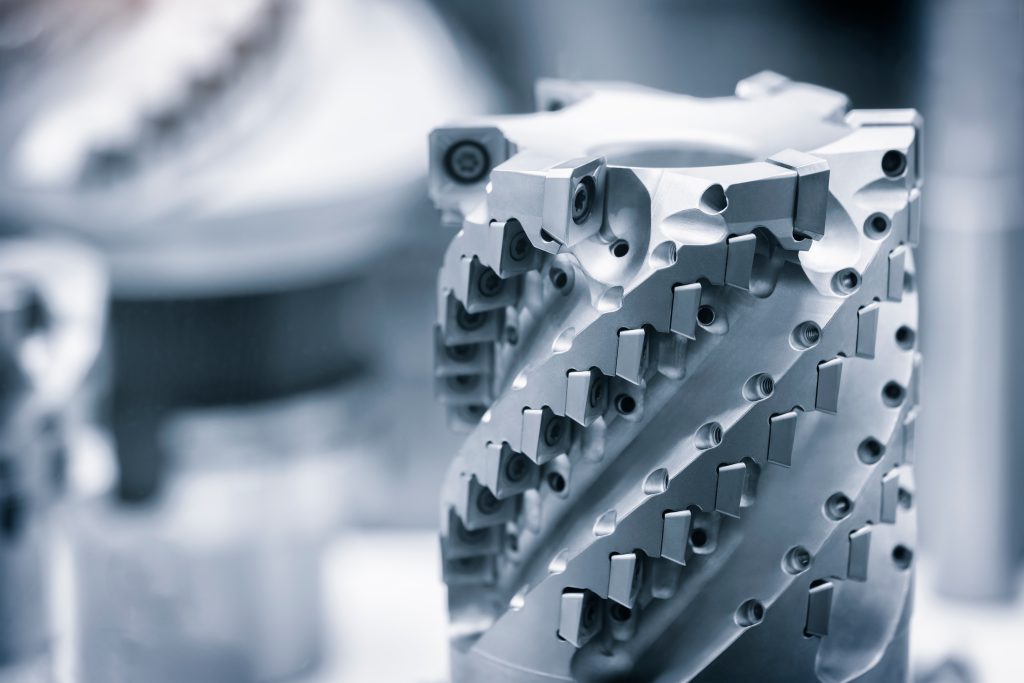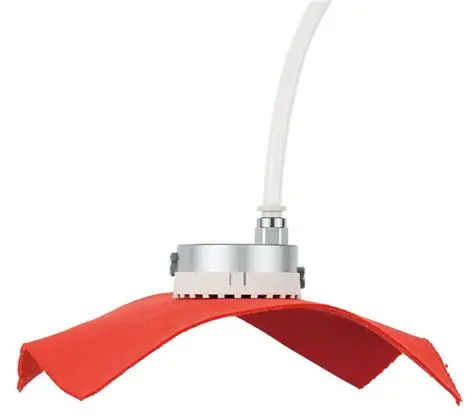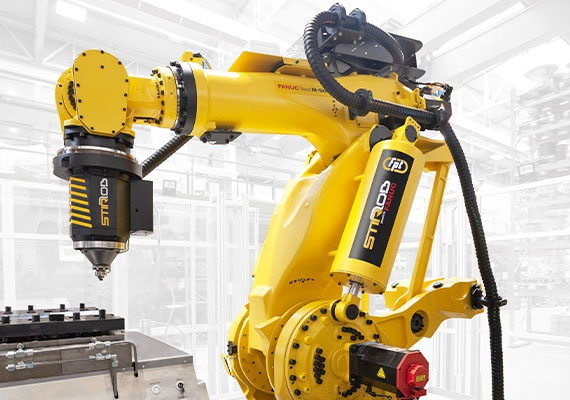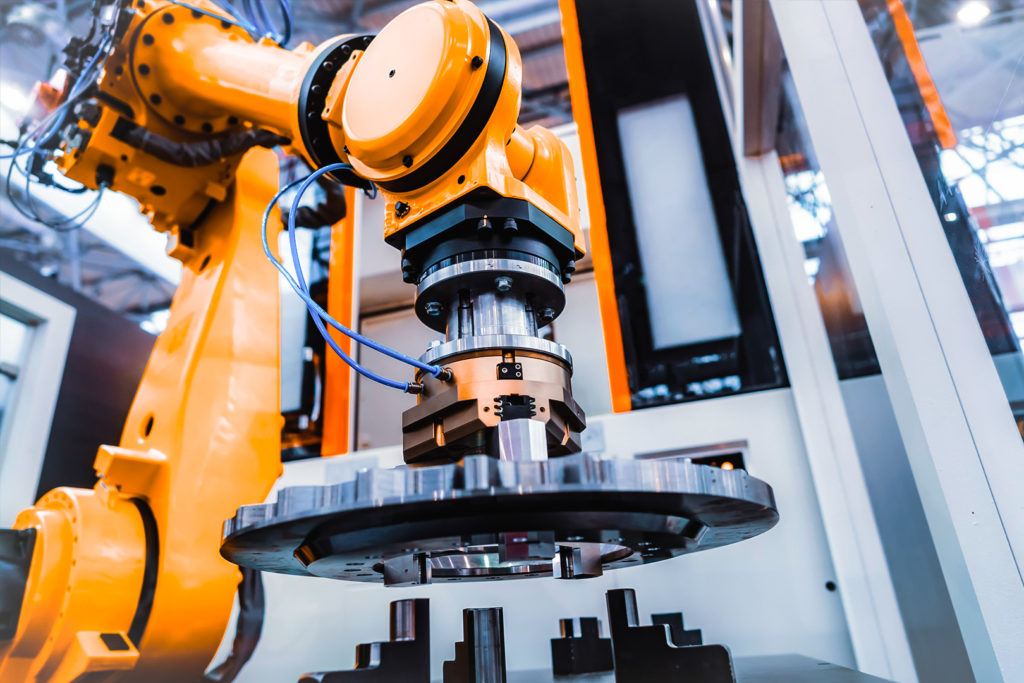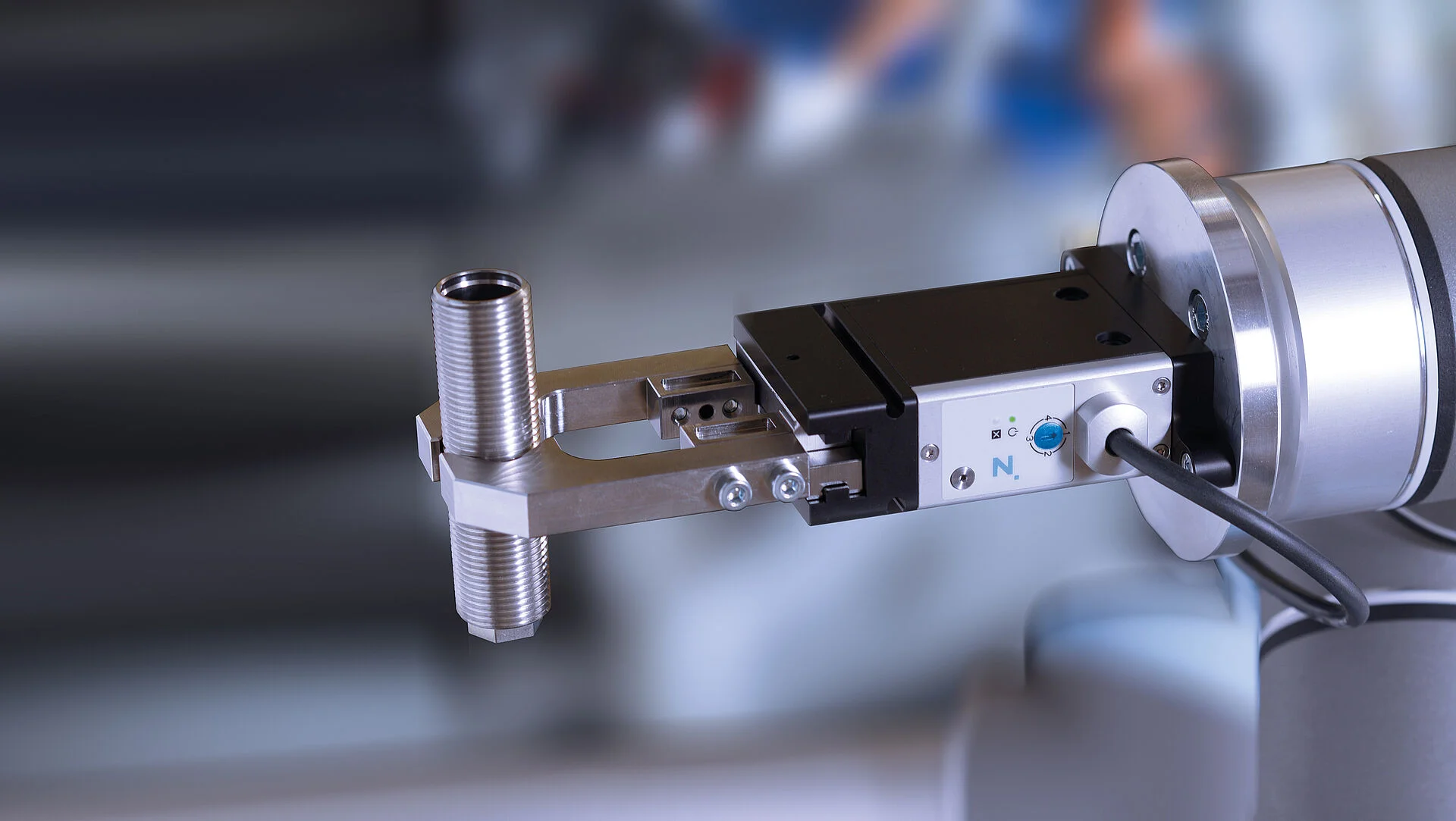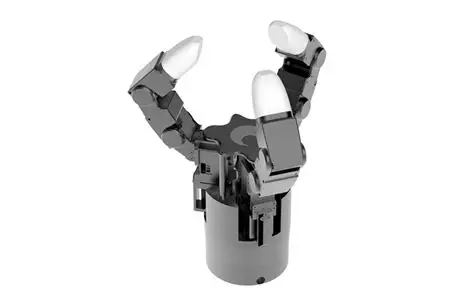Precision Motion Control: Advanced Robotic Encoder Manufacturing Through CNC Technology
The evolution of modern robotics has created unprecedented demands for precise position feedback systems that enable accurate motion control and repeatable positioning. At the core of these sophisticated control systems, robotic encoder technology serves as the critical sensory interface that provides real-time positional data to robotic controllers. At JLYPT CNC Machining, we have established ourselves as specialists in manufacturing precision components for robotic encoder systems, combining advanced CNC technologies with deep metrological expertise to produce encoder components that meet the exacting requirements of modern robotic applications.
This comprehensive technical analysis explores the engineering principles, manufacturing methodologies, and quality assurance protocols that define world-class robotic encoder component production. We examine how strategic implementation of multi-axis CNC machining, specialized metrology processes, and rigorous validation protocols enables the creation of encoder components that deliver exceptional accuracy and reliability in demanding robotic applications across manufacturing, aerospace, medical, and research sectors.
Fundamental Principles of Robotic Encoder Technology
Robotic encoder systems represent sophisticated measurement devices that detect and quantify rotational or linear position with high precision. These sensors typically employ optical, magnetic, or inductive technologies to provide accurate position feedback for closed-loop control systems in robotic applications.
Encoder Technology Configurations
The measurement accuracy of robotic encoder systems depends on precise mechanical configurations and sensing technologies:
-
Optical Encoder Systems: Utilize precision glass or metal code discs with photoelectric sensors providing resolution up to 4,194,304 pulses per revolution (22-bit) with accuracy typically within ±5 arc-seconds
-
Magnetic Encoder Systems: Employ magnetic code rings and Hall-effect sensors offering robust performance in contaminated environments with typical resolutions of 12-16 bits and accuracy within ±0.3 degrees
-
Inductive Encoder Systems: Use electromagnetic coupling for position detection providing excellent resistance to environmental contaminants with resolutions up to 24 bits and accuracy within ±10 arc-seconds
-
Capacitive Encoder Systems: Utilize varying capacitance for position measurement offering high resolution and environmental stability with typical accuracy within ±20 arc-seconds
Mechanical Interface Design Considerations
The performance of robotic encoder systems hinges on precisely engineered mechanical interfaces:
-
Shaft Coupling Design: Critical alignment of encoder shafts with typical radial error motion requirements below 0.005 mm and axial error motion below 0.003 mm for high-precision applications
-
Bearing Preload Optimization: Strategic bearing preload typically between 10-50 N to minimize axial and radial play while maintaining smooth rotation and minimizing friction-induced errors
-
Thermal Expansion Management: Material selection and mechanical design providing thermal stability with typical thermal expansion coefficients matched to adjacent components within 2 ppm/°C
-
Vibration Resistance: Structural design ensuring natural frequencies typically exceeding 1 kHz to prevent interference with robotic motion frequencies and environmental vibrations
Advanced Manufacturing Technologies for Robotic Encoders
The production of high-accuracy robotic encoder components requires specialized manufacturing approaches and equipment capabilities:
Multi-Axis CNC Machining Capabilities
Modern CNC technologies provide the foundation for precision encoder component manufacturing:
-
5-Axis Simultaneous Machining: Complex contouring of encoder housing geometries with continuous toolpath control while maintaining critical relationships to bearing bores and mounting interfaces
-
Ultra-Precision Turning: Diamond turning of encoder shafts and code discs achieving surface finishes better than Ra 0.025 μm and roundness within 0.1 μm for optical encoder applications
-
Micro-Milling Operations: Precision machining of delicate encoder features using tools as small as 0.2 mm diameter with spindle speeds exceeding 50,000 RPM and optimized cutting parameters
-
High-Speed Machining: Advanced spindle technology with balanced toolholders and thermal stability systems for superior surface finishes in critical encoder components
Specialized Machining Processes for Encoder Components
Critical encoder elements require highly specialized manufacturing approaches:
-
Precision Boring Operations: Specialist boring techniques achieving bore diameter tolerances within IT4 grade (±0.00125 mm) with cylindricity better than 0.0005 mm for encoder bearing seats
-
Grinding and Honing: Precision abrasive processes for hardened encoder components achieving surface finishes better than Ra 0.1 μm and geometric accuracies within 0.0003 mm
-
Electrical Discharge Machining: Precision EDM processes for complex encoder code patterns with feature resolution down to 0.005 mm and positional accuracy within 0.002 mm
-
Laser Machining and Etching: Ultra-precision laser processes for encoder scale patterns with line widths down to 0.001 mm and positional accuracy within 0.0005 mm
Technical Specifications for Robotic Encoder Applications
The table below outlines critical technical specifications for various robotic encoder applications across different robot configurations and industries:
| Application Type | Resolution | Accuracy | Maximum Speed | Operating Temperature | Protection Rating |
|---|---|---|---|---|---|
| Collaborative Robots | 17-20 bit | ±30 arc-sec | 6,000 RPM | 0°C to 70°C | IP54 |
| Industrial Articulated Arms | 20-23 bit | ±10 arc-sec | 8,000 RPM | -10°C to 85°C | IP65 |
| Delta Robots | 19-21 bit | ±15 arc-sec | 12,000 RPM | 0°C to 70°C | IP64 |
| Medical Robotics | 18-20 bit | ±20 arc-sec | 4,000 RPM | 10°C to 60°C | IP68 |
| Aerospace Robotics | 22-24 bit | ±5 arc-sec | 10,000 RPM | -40°C to 105°C | IP67 |
Material Selection for Robotic Encoder Components
The performance and stability of robotic encoder systems are profoundly influenced by appropriate material selection and thermal processing:
Aluminum Alloys for Housing Components
-
6061-T6: General-purpose aluminum alloy with good machinability and stability, suitable for standard industrial encoder applications with thermal expansion coefficient of 23.6 μm/m-°C
-
7075-T7351: High-strength aluminum alloy with excellent strength-to-weight ratio and improved stress corrosion resistance, used in high-performance encoder applications
-
5083-H32: Aluminum alloy with excellent corrosion resistance and good machinability, suitable for marine and harsh environment encoder applications
Stainless Steel Alloys for Precision Components
-
17-4PH (H1150): Precipitation hardening stainless steel offering excellent strength, corrosion resistance, and stability with typical yield strength of 1000 MPa and thermal expansion coefficient of 10.8 μm/m-°C
-
AISI 304/304L: Austenitic stainless steel providing excellent corrosion resistance with moderate strength, suitable for food processing and medical applications
-
AISI 416: Martensitic stainless steel offering good machinability with moderate corrosion resistance and heat treatability
Specialty Alloys for Demanding Applications
-
Invar 36: Nickel-iron alloy with extremely low thermal expansion coefficient (1.3 μm/m-°C) used in ultra-precision encoder applications requiring exceptional thermal stability
-
Ti-6Al-4V (Grade 5): Titanium alloy offering excellent strength-to-weight ratio and corrosion resistance with thermal expansion coefficient of 8.6 μm/m-°C
-
Copper-Beryllium (C17200): High-strength copper alloy with excellent thermal conductivity and non-magnetic properties, used in specialized encoder applications
Heat Treatment and Stabilization Processes
The strategic application of heat treatment and stabilization processes significantly improves robotic encoder performance and long-term stability:
-
Precipitation Hardening: For alloys like 17-4PH and 15-5PH to achieve optimal combination of strength, toughness, and dimensional stability with typical hardness of 38-45 HRC
-
Stress Relief Annealing: Low-temperature thermal processing typically at 500-600°C for aluminum alloys and 650-750°C for steel alloys to relieve machining-induced residual stresses
-
Cryogenic Treatment: Deep freezing to temperatures of -80°C to -196°C to transform retained austenite and stabilize dimensional characteristics in precision encoder components
-
Artificial Aging: Controlled thermal aging to accelerate natural aging processes and ensure long-term dimensional stability in encoder components
-
Thermal Cycling: Repeated cycling between temperature extremes to identify potential instability issues and stabilize material characteristics
Comprehensive Case Studies: Robotic Encoder Applications
Case Study 1: High-Speed Delta Robot Encoder System
-
Challenge: A packaging automation manufacturer required ultra-high-resolution encoders for delta robots performing precision pick-and-place operations at 200 cycles per minute. The application demanded exceptional accuracy (±10 arc-seconds), high rotational speed (12,000 RPM), and reliable operation in food processing environments.
-
Technical Solution: We manufactured encoder code discs from Invar 36 with precision diamond-turned surfaces achieving flatness within 0.0005 mm. The encoder housings were machined from 6061-T6 aluminum with bearing seats finished to IT4 tolerance.
-
Manufacturing Approach: The encoder components underwent multi-stage machining with intermediate stress relief cycles. Code discs were diamond-turned using ultra-precision lathes with air-bearing spindles. Final assemblies underwent dynamic balancing to G2.5 grade at operating speed to minimize vibration.
-
Results: The delivered encoders demonstrated accuracy of ±8 arc-seconds with maximum operational speed of 13,500 RPM. The systems maintained stable operation through 50 million cycles with positional repeatability within ±2 arc-seconds, enabling the customer to achieve their throughput targets with 99.98% placement accuracy.
Case Study 2: Surgical Robot Encoder System
-
Challenge: A medical device company needed miniature absolute encoders for a minimally invasive surgical robot. The encoders required biocompatible materials, exceptional resolution (20-bit), and the ability to withstand repeated sterilization processes including autoclaving at 134°C.
-
Technical Solution: We engineered the encoder components from AISI 316L stainless steel with precision-machined code patterns. The design incorporated special sealing systems achieving IP68 protection and autoclave compatibility.
-
Manufacturing Approach: The encoders were manufactured using 5-axis micro-machining with specialized tooling for miniature features. Critical surfaces were finished using precision grinding to achieve surface finishes better than Ra 0.1 μm. The complete assemblies underwent sterilization cycle testing with 500 autoclave cycles to validate long-term reliability.
-
Results: The medical-grade encoders achieved resolution of 1,048,576 positions per revolution (20-bit) with accuracy of ±25 arc-seconds. The components withstood repeated sterilization without degradation in performance, receiving regulatory approval for surgical use and enabling precise instrument positioning in minimally invasive procedures.
Case Study 3: Aerospace Robotic Welding Encoder System
-
Challenge: An aerospace manufacturer required rugged absolute encoders for robotic welding systems used in aircraft component fabrication. The application demanded high accuracy (±5 arc-seconds), extreme temperature stability (-40°C to +105°C), and immunity to electromagnetic interference from welding equipment.
-
Technical Solution: We developed encoder systems using 17-4PH H1150 stainless steel with specialized electromagnetic shielding. The design incorporated high-temperature bearings and thermal compensation systems to maintain accuracy across the specified temperature range.
-
Manufacturing Approach: The encoder components were manufactured using high-precision machining with strategic sequencing to manage thermal stresses. Critical bearing seats were finished using honing processes to achieve geometric accuracies within 0.0003 mm. Final assemblies underwent thermal cycling and EMI testing to validate performance under worst-case conditions.
-
Results: The encoders demonstrated accuracy of ±4 arc-seconds with temperature-induced error less than ±1 arc-second across the specified temperature range. The systems maintained stable operation in electromagnetic fields up to 50 V/m, enabling precise robotic welding with positional accuracy within 0.1 mm over multi-meter work envelopes.
Quality Assurance and Metrology for Robotic Encoders
The verification of robotic encoder quality requires sophisticated metrology approaches and rigorous calibration protocols:
-
Dimensional Metrology: Comprehensive evaluation of critical features using coordinate measuring machines with measurement uncertainty better than 0.5 μm and form measurement capability to 0.1 μm
-
Surface Metrology: Precise measurement of surface finish, waviness, and lay pattern using contact and non-contact profilometry with resolution to 0.01 μm
-
Geometric Tolerance Verification: Assessment of flatness, roundness, cylindricity, and perpendicularity using rotary tables and precision indicators with resolution to 0.0001 mm
-
Dynamic Performance Testing: Evaluation of encoder performance under operational conditions including speed-dependent error, vibration sensitivity, and thermal behavior
-
Calibration and Accuracy Verification: Comprehensive calibration against master encoders and angular measurement standards with traceability to national standards
Future Trends in Robotic Encoder Technology
The field of robotic encoder technology continues to evolve with emerging materials, manufacturing methods, and sensing technologies:
-
Additive Manufacturing Integration: Hybrid manufacturing approaches combining 3D printing of complex encoder structures with precision machining of critical functional surfaces for optimized performance and weight reduction
-
Advanced Material Applications: Implementation of ceramic composites, engineered polymers, and carbon fiber composites with tailored thermal and mechanical properties for specific encoder applications
-
Integrated Smart Encoders: Development of encoders with embedded processing capability, wireless communication, and self-diagnostic functions for Industry 4.0 applications
-
Multi-Layer and 3D Encoding: Advanced encoding technologies providing six-degree-of-freedom position and orientation data from single compact sensor units
-
Quantum-inspired Encoding: Emerging technologies utilizing quantum principles for ultra-high-resolution position sensing with potential resolutions exceeding 28 bits
Conclusion: Precision Encoding for Advanced Robotics
The design and manufacture of high-performance robotic encoder systems represents a specialized domain where precision engineering, materials science, electronics, and advanced manufacturing converge. Success in this demanding field requires comprehensive expertise in encoder design, manufacturing processes, electronics integration, and calibration, combined with deep understanding of the unique requirements of robotic applications.
At JLYPT CNC Machining, our specialized approach to robotic encoder component manufacturing combines state-of-the-art equipment, advanced engineering capabilities, and rigorous quality systems to produce encoder components that meet the extraordinary demands of modern robotics. Whether supporting collaborative robots, industrial automation, aerospace applications, or medical devices, our capabilities and commitment to excellence ensure that our customers receive optimal solutions for their most challenging motion control requirements.
Ready to enhance your robotic systems with precision encoder technology? Contact JLYPT CNC Machining today to discover how our expertise in robotic encoder manufacturing can help you achieve your performance, reliability, and precision goals. Visit our CNC Machining Services page to learn more about our comprehensive capabilities and request your instant quote.

